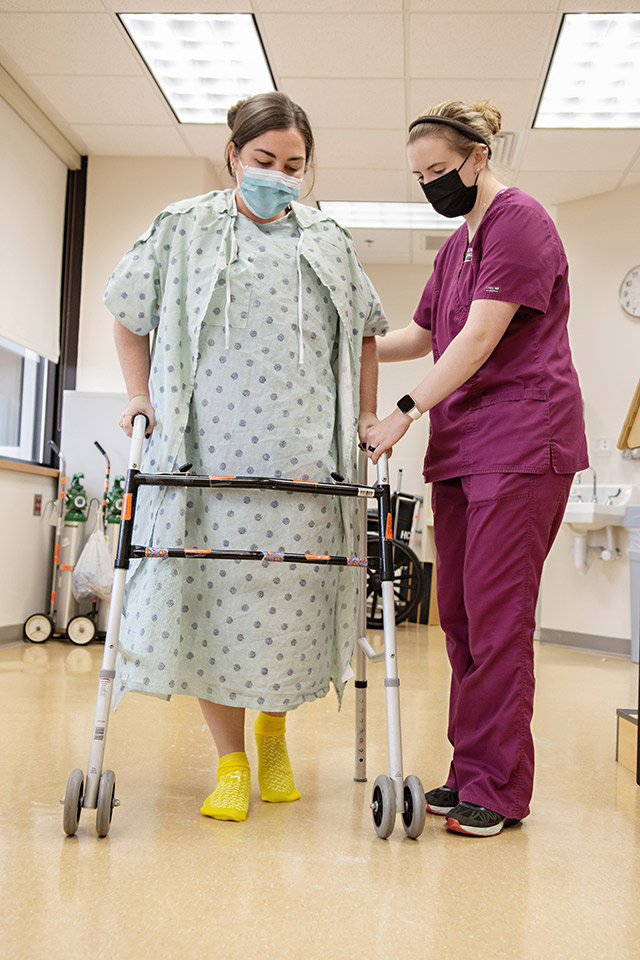New Rehab Program May Help Patients Go Home Faster After Surgery

Last year, members of the Johns Hopkins Department of Physical Medicine and Rehabilitation wanted to see if patients needing rehabilitation after surgery could be treated with intensive therapy in the hospital, then go home instead of to a post-acute care rehab facility. The clinicians strived to make sure the patients could stay home without having to be readmitted to the hospital.
Rehab2Home, a pilot program, was a success, according to Erik Hoyer, vice chair for quality, safety and satisfaction in the Johns Hopkins Department of Physical Medicine and Rehabilitation. Hoyer led the project. A publication on the pilot program’s results is forthcoming.
“There is an opportunity where patients with a specific profile could go straight home if we can provide enhanced rehabilitation in the hospital setting,” says Annette Lavezza, director of inpatient rehabilitation therapy services at The Johns Hopkins Hospital. “We wanted to develop a model where we could deliver that enhanced rehabilitation with the outcome being patients could go home rather than to a post-acute facility.”
The pilot program was partially inspired by difficulties the hospital was having placing patients in rehab facilities after their hospital stay. This issue started before the COVID-19 pandemic but was exasperated by it for several reasons, including that many facilities with two beds in a room could only use one. Difficulties placing patients in these facilities remain.
We really needed to re-think and create a different approach for rehabilitation. So we decided to do this in the hospital setting, to do this intensively and in an interdisciplinary manner.
Erik Hoyer, M.D.
Starting in March of last year and running for three months, Rehab2Home targeted 80 older patients who were post-surgery. The patients did not have significant cognition issues, they had some support at home and going to a post-acute care facility would have been recommended for them following their hospitalization. An intervention was planned for the patients to be seen six days per week by physical and occupational therapists, with speech-language pathology available five days each week as needed.
Therapy and physiatry teams, with Hoyer serving as the physiatrist, led the effort. Hoyer and the other clinicians met for daily huddles, and they spoke with Johns Hopkins Care at Home staff members weekly to provide input on patients who were transitioning home.
For the team’s upcoming publication about the program, the results are being compared with those for a similar historic patient population that did not receive enhanced rehabilitation.
Johns Hopkins has a history of treating patients in the intensive care unit with enhanced rehabilitation, which has shown to significantly benefit their recovery. During the height of COVID-19, some hospitalized patients were treated by interdisciplinary clinician teams similar to the group that participated in Rehab2Home.
For more information about the Department of Physical Medicine and Rehabilitation’s research, click here.
